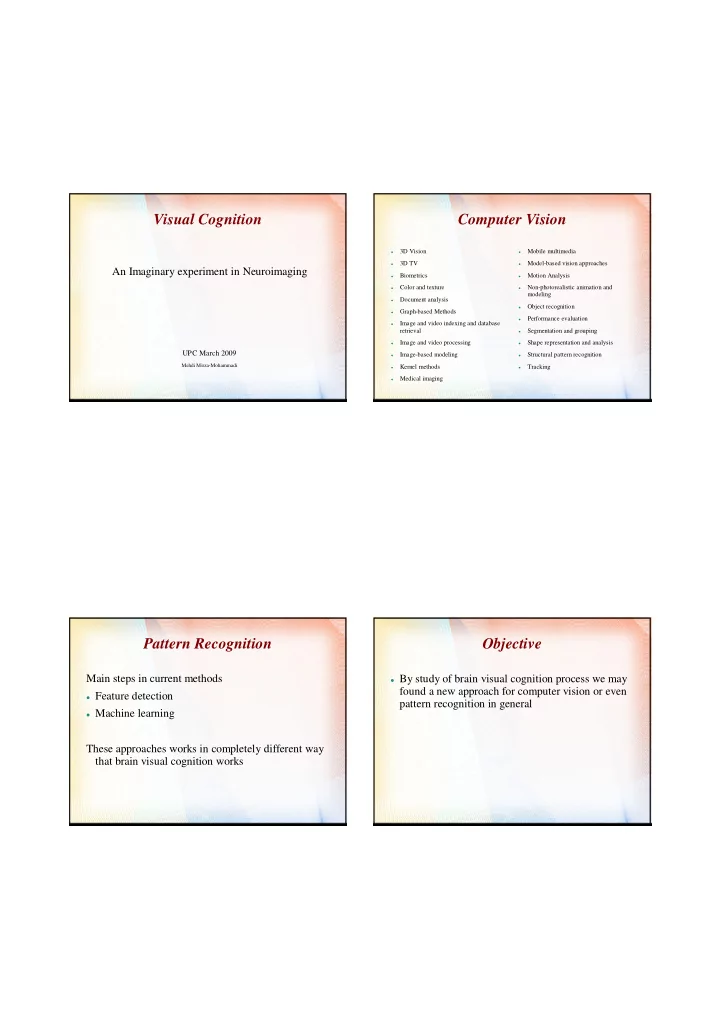

Visual Cognition Computer Vision 3D Vision Mobile multimedia 3D TV Model-based vision approaches An Imaginary experiment in Neuroimaging Biometrics Motion Analysis Color and texture Non-photorealistic animation and modeling Document analysis Object recognition Graph-based Methods Performance evaluation Image and video indexing and database retrieval Segmentation and grouping Image and video processing Shape representation and analysis UPC March 2009 Image-based modeling Structural pattern recognition Mehdi Mirza-Mohammadi Kernel methods Tracking Medical imaging Pattern Recognition Objective Main steps in current methods By study of brain visual cognition process we may found a new approach for computer vision or even Feature detection pattern recognition in general Machine learning These approaches works in completely different way that brain visual cognition works 1
Hypothesis Brain-computer interface There are some research in which, machine can Record neuro activity of visual cognition learn brain signal activities Analyze and train machine with these data Simulate visual signals form eye from a digital image Develop a commuter vision by these data Neuroimaging Techniques Training Magnetoencephalography (MEG) We record brain activity during vision process functional magnetic resonance imaging (fMRI) Then try to find a pattern on these data and learn it via machine learning methods Electroencephalography (EEG) 2
Eye Signals Result Next step is to find a way to produce same signals as If we input these artificial eye's vision signals form eye produce, in computer by a digital image an image to our trained machine we can have visual cognition as our brain do Problems Good News There have been some very interesting experiments which have been able to detect image object There are huge amount of data, we need to know category from fMRI and MEG images and even where exactly to look and record some to reconstruct images and display them on a Machine training with these amount of data needs computer! lots of computing resources and time Eye signal simulation Even if it is successful it may not be practical due to huge computation cost "Decoding the Mind's Eye - Visual Image Reconstruction from Human Brain Activity using a Combination of Multiscale Local Image Decoders", Neuron (Elsevier, Cell Press) 60 (5): 915-929, 10 December 2008, doi:10.1016/j.neuron.2008.11.004 Cox, D.D., and Savoy, R.L. (2003). Functional magnetic resonance imaging (fMRI) ‘‘brain reading’’: detecting and classifying distributed patterns of fMRI activity in human visual cortex. Neuroimage 19, 261–270. 3
Recommend
More recommend